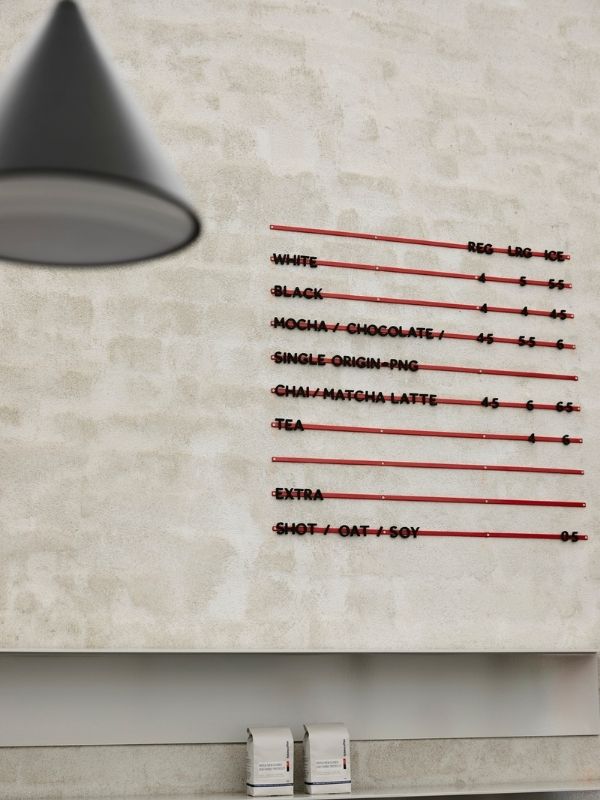24 square metres. Total. That’s the size of Dux Coffee’s Melbourne coffee bar. Nestled amongst a hidden arcade, Pierce Widera were called upon to embrace the space’s history, with the work conducted by the practice more a restoration than a renovation.
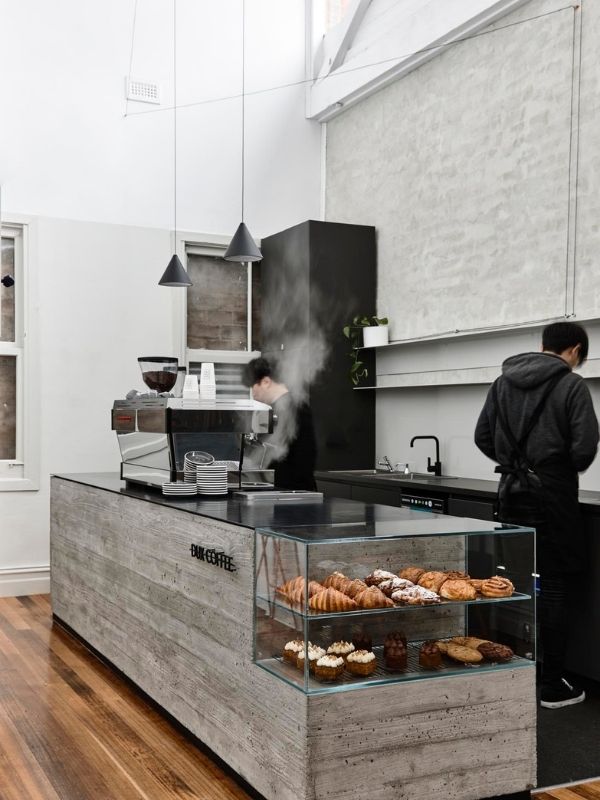
The shop is higher than it is deep, and provides an insight into its previous life, through the existing elements that are old rafters, clerestory windows, a pressed metal ceiling, a rich copper facade detailing hidden behind layers of dust. The site’s evolution is witnessed through the blocking of two windows some time ago, and a connecting door to the neighbouring shop that has been closed off.
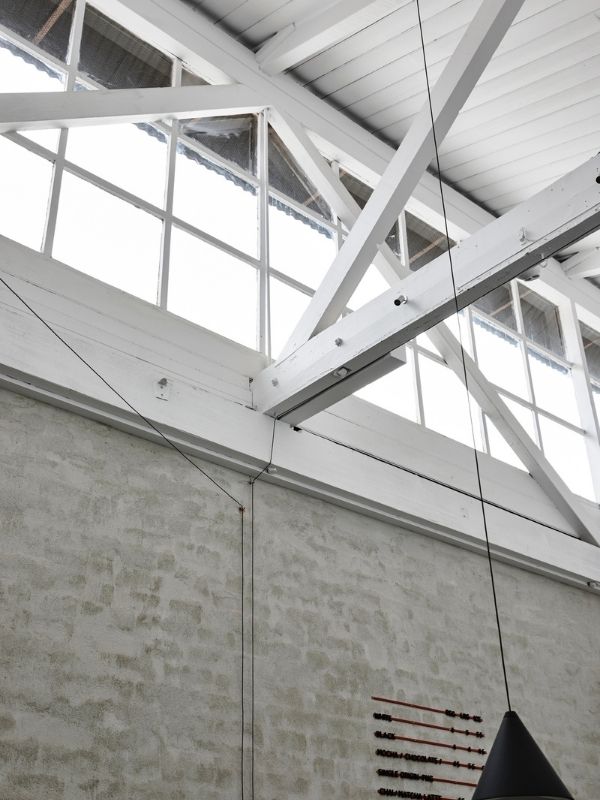
Pierce Widera embraced the history of the site into their design narrative, acknowledging the past and using it to inform their approach. The floor has been restored, the pressed metal repaired and the copper detailing acid cleaned.

The monolithic concrete bar is very much the big ticket item of the space. Apart from hosting the coffee machine with all its accessories, it is home to a generous glass pastry display, and sits confidently in front of the bagged brick wall.
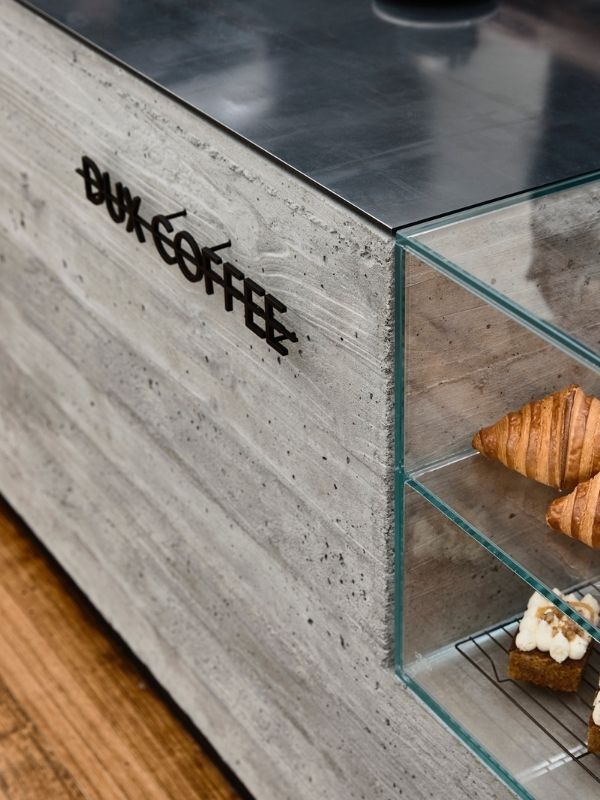
The back bar focusses on functionality as opposed to salience. A pale grey splashback and shelf blend effortlessly into the brick wall, providing essential display and storage space. Accents of American Oak timber are used as slim waiting tables and additional display opportunities.

Two suspended pendants immediately draw the eye to the oversized high ceiling, exposing the sheer height of the space, and with their black cords provide an almost sculptural element.

Cutting through the earthy textural palette is a rich fiery coloured powder coat used in the frames of the stools and the minimalistic menu board. The recycled timber floor, following its adaptive reuse, offers a rich foundation to the materials used.
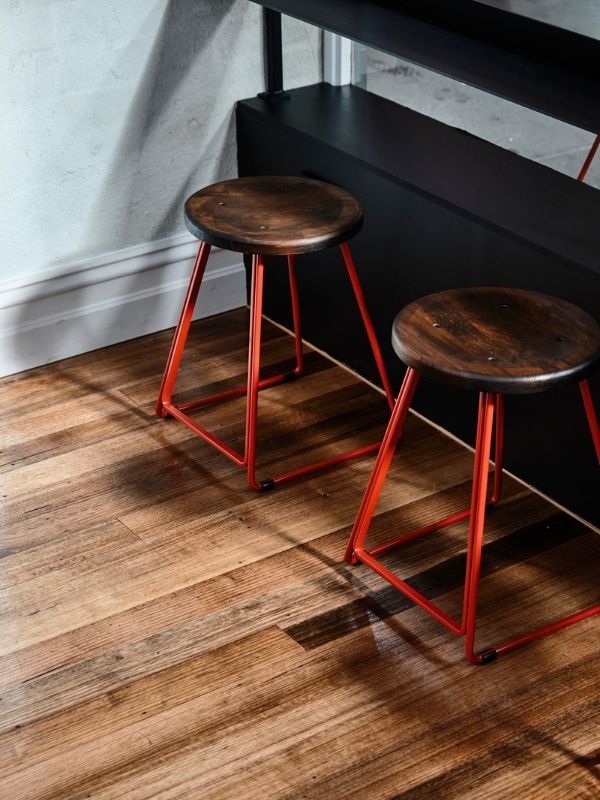
The design for Dux Coffee is about creating something that respects its surroundings, complements the existing, and offers a meaningful interaction with its customers. Pierce Widera has smartly accompanied contemporary ideals with the building’s heritage, to create a space that ensures that coffee and its various stages and forms is front and centre.
